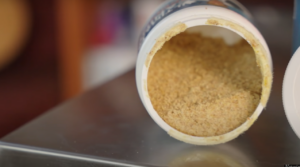When it comes to feeding our furry companions, pet owners are increasingly exploring alternatives to standard dry dog food, seeking more natural and nutritious options. While dry kibble has long been a staple in canine diets due to its convenience and affordability, it doesn’t always provide the same level of quality or variety as other food options. Exploring alternative dog food ideas can offer pets a more balanced and wholesome diet, one that caters to their specific nutritional needs and provides health benefits. These alternatives not only promote better digestion and energy levels but can also help reduce allergies or sensitivities some dogs may have to traditional kibble ingredients.

Fresh Whole Ingredients
One popular alternative is homemade dog food, where pet owners prepare meals for their dogs using fresh, whole ingredients like lean meats, vegetables, and grains such as quinoa or rice. This allows pet owners to control the quality and sourcing of their dog’s food, ensuring that it is free of additives, preservatives, and low-quality fillers often found in commercial dog food. Lean meats like chicken, turkey, or beef can provide high-quality protein, while vegetables like carrots, sweet potatoes, and green beans supply essential vitamins and fiber. Additionally, incorporating healthy fats such as fish oil can contribute to a shiny coat and overall skin health.
Biologically Appropriate Raw Food – BARF
 Another growing trend is raw feeding, or the “BARF” diet (biologically appropriate raw food), which includes raw meat, bones, fruits, and vegetables. Proponents of the raw food diet believe that dogs thrive on a diet closer to what their ancestors ate in the wild, providing optimal nutrition and improving coat health, digestion, and energy levels. Raw meat, along with bones for natural chewing and dental health, is a rich source of protein, and fruits and vegetables provide antioxidants and vitamins. However, raw feeding requires careful planning and research to ensure it is nutritionally balanced and safe, particularly when it comes to preventing bacterial contamination or bone splinters.
Another growing trend is raw feeding, or the “BARF” diet (biologically appropriate raw food), which includes raw meat, bones, fruits, and vegetables. Proponents of the raw food diet believe that dogs thrive on a diet closer to what their ancestors ate in the wild, providing optimal nutrition and improving coat health, digestion, and energy levels. Raw meat, along with bones for natural chewing and dental health, is a rich source of protein, and fruits and vegetables provide antioxidants and vitamins. However, raw feeding requires careful planning and research to ensure it is nutritionally balanced and safe, particularly when it comes to preventing bacterial contamination or bone splinters.
Traditional Foods
Canned or freeze-dried dog food is another great alternative to dry kibble. Freeze-dried foods retain much of their nutritional value while offering a longer shelf life and convenient storage. These options are often made from high-quality meats and vegetables, without the added fillers and preservatives found in some dry foods. Canned food also provides moisture to a dog’s diet, which can be particularly beneficial for dogs that don’t drink enough water, helping to prevent urinary tract issues.
When considering alternatives, it’s important to recognize the benefits they offer over traditional kibble. Many of these alternatives are less processed and contain higher-quality ingredients, which can lead to improved digestion, healthier skin, and a shinier coat. These foods are often free from artificial preservatives, colors, and flavors, reducing the risk of food allergies and sensitivities in dogs. Additionally, fresh or raw food diets can be more customizable, allowing pet owners to cater specifically to their dog’s health needs or dietary restrictions, such as sensitivities to grains or certain proteins.
Lesser Known Alternative Foods
 Incorporating granola into a dog’s diet is an interesting and lesser-known alternative, but it should be approached with caution. Granola, while a healthy snack for humans, is not typically recommended for pets. It often contains ingredients like raisins, nuts, chocolate, and sweeteners such as honey, which are toxic to dogs. However, plain, unsweetened granola without these harmful ingredients can be an occasional treat in small quantities. It can provide fiber and nutrients, but it should never replace a balanced diet for pets. Granola should only be given in moderation, as too much could lead to weight gain due to its high-calorie content. It’s always advisable to consult with a veterinarian before introducing new foods like ways to eat granola into a dog’s diet to ensure their safety and well-being.
Incorporating granola into a dog’s diet is an interesting and lesser-known alternative, but it should be approached with caution. Granola, while a healthy snack for humans, is not typically recommended for pets. It often contains ingredients like raisins, nuts, chocolate, and sweeteners such as honey, which are toxic to dogs. However, plain, unsweetened granola without these harmful ingredients can be an occasional treat in small quantities. It can provide fiber and nutrients, but it should never replace a balanced diet for pets. Granola should only be given in moderation, as too much could lead to weight gain due to its high-calorie content. It’s always advisable to consult with a veterinarian before introducing new foods like ways to eat granola into a dog’s diet to ensure their safety and well-being.
Alternative dog food options provide many benefits over traditional dry kibble, such as better quality ingredients, more customization, and fewer preservatives. Homemade meals, raw food diets, and high-quality canned or freeze-dried foods can all contribute to a more balanced and nutritious diet for dogs, improving their health, energy, and overall quality of life. While granola may offer some benefits in terms of fiber, it should be given cautiously and in moderation, with attention to any ingredients that may be harmful to dogs. Always ensure any new food introduced into a dog’s diet is safe and suitable for their specific health needs.